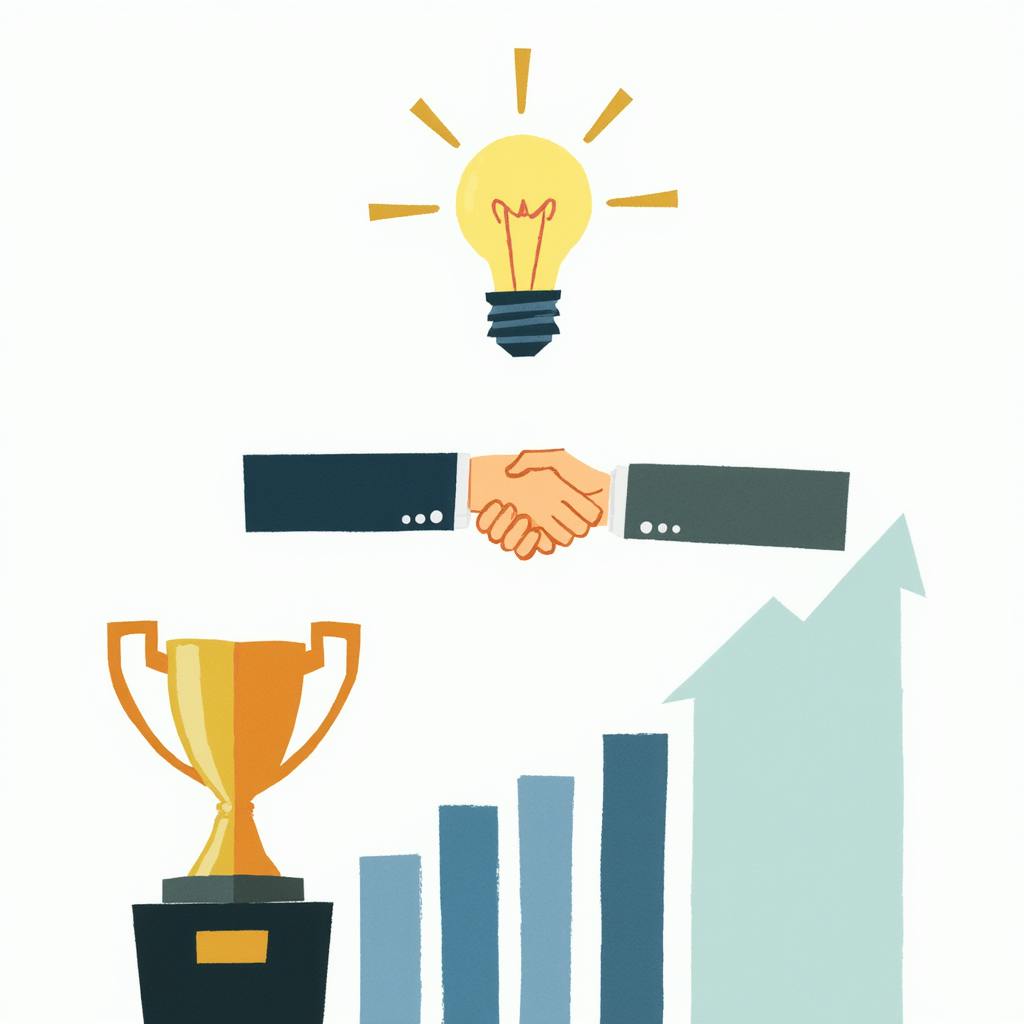The ability to effectively measure and analyze performance is critical to gaining a competitive edge. Key Performance Indicators (KPIs) serve as invaluable tools for assessing business health and guiding strategic decisions. Common examples of KPIs, such as sales growth, customer retention rates, and marketing ROI, act as compasses to navigate the complex business environment. This article delves into real-life examples of KPIs, offering insights into how they are applied across various sectors for business growth and performance enhancement.
Understanding Common Examples of KPIs
Sales and Revenue Metrics
One of the most commonly used KPI examples revolves around sales and revenue. Businesses track indicators such as monthly sales growth, average revenue per customer, and customer acquisition cost. For instance, a retail company may measure sales conversion rates to evaluate the effectiveness of its sales strategy. By understanding these indicators, businesses can adjust their marketing and sales efforts to maximize revenue.
Customer-Related Metrics
Customer satisfaction and retention are crucial elements of sustained business growth. KPIs like Net Promoter Score (NPS) and customer lifetime value (CLV) provide insights into customer loyalty and the long-term value of clients to a business. An example would be a subscription-based service that continuously measures churn rate to reduce the number of subscribers leaving each month, thereby ensuring steady growth.
Marketing Performance Metrics
In the realm of marketing, understanding KPI examples can significantly enhance strategic decision-making. Performance indicators such as return on marketing investment (ROMI), cost per lead (CPL), and engagement rates are fundamental in evaluating marketing effectiveness. For example, a digital marketing agency might assess click-through rates (CTR) on advertising campaigns to determine the content's resonance with the target audience.

AI made with Dean Jones
KPI Examples for Business Growth
Operational Efficiency KPIs
For operations, KPIs such as production efficiency, defect rates, and fulfillment times provide a clear picture of an organization’s internal processes. Manufacturing companies, for example, often track the number of defective units produced to identify areas for improvement. Streamlining these processes leads directly to cost savings and improved profit margins.
Financial Performance KPIs
Financial KPIs are vital for assessing a company's economic health. Metrics like profit margins, return on equity (ROE), and debt-to-equity ratio are used to gauge sustainability and financial viability. An illustrative example could be a corporation evaluating its EBITDA (Earnings Before Interest, Taxes, Depreciation, and Amortization) to understand its operating performance before considering financial and accounting decisions.
Practical Applications and Benefits of KPIs
Enhanced Decision Making
Using the right KPIs enables businesses to make informed strategic decisions. By establishing baseline measurements and setting targeted goals, organizations can focus efforts where they are most needed. For instance, a tech company may utilize KPIs to optimize its software development process, thereby reducing time to market and gaining a competitive advantage.
Strategic Alignment and Goal Setting
KPIs ensure that all business activities align with the strategic objectives of the organization. They provide a framework for setting actionable, measurable goals. For example, by employing operational KPIs, logistics firms can align delivery times with consumer expectations, thereby improving customer satisfaction and brand reputation.
FAQ: Understanding Key Performance Indicators (KPIs)
What are some real-life examples of Key Performance Indicators?
Key Performance Indicators (KPIs) are measurable values that demonstrate how effectively a company is achieving key business objectives. Here are some real-life examples of KPIs used across various scenarios:
- Sales Growth Rate: Measures the increase or decrease in sales over a specific period. It helps in assessing a company's market performance.
- Customer Acquisition Cost (CAC): Indicates the total cost involved in acquiring a new customer, including marketing and sales expenses.
- Customer Retention Rate: Reflects the ability of a company to retain customers over time, critical for long-term business success.
- Net Profit Margin: Shows the percentage of revenue that represents profit after all expenses are deducted, highlighting profitability.
- Employee Turnover Rate: Measures how often employees are leaving the organization, which can indicate the workplace environment and satisfaction.
Can you give examples of effective KPIs used in business?
Effective KPIs are those that align with your business goals and strategy. Here are a few examples:
- Return on Investment (ROI): Evaluates the benefit earned from an investment as compared to its cost, crucial for financial planning and investment assessment.
- Lead Conversion Rate: Measures the percentage of leads that turn into customers, helping to evaluate the effectiveness of sales strategies.
- Inventory Turnover: Assesses how efficiently a company is managing its stock, indicating how many times inventory is sold and replaced over a period.
- Average Order Value (AOV): Calculates the average amount spent each time a customer places an order, important for understanding sales performance.
- Website Traffic Sources: Analyzes where website visitors are coming from, aiding in the optimization of marketing channels and campaigns.

AI made with Dean Jones
What are KPI examples in different industries?
KPIs can vary significantly across industries due to different operational focuses. Here are examples for a few sectors:
Retail Industry:
- Sales Per Square Foot: Measures the revenue generated relative to the amount of retail space available.
- Gross Margin Return on Investment (GMROI): Assesses the profitability of inventory.
Healthcare Industry:
- Patient Wait Time: Evaluates the average time a patient waits before receiving care, critical for patient satisfaction.
- Readmission Rates: Measures the frequency of patients returning for treatment shortly after discharge, important for care quality.
Manufacturing Industry:
- Overall Equipment Effectiveness (OEE): Assesses how effectively manufacturing equipment is used, incorporating efficiency, quality, and availability.
- Defect Density: Measures the number of defects found in a product, essential for quality control.
Tech Industry:
- Service Level Agreements (SLA) Compliance: Monitors adherence to SLA terms, crucial for customer satisfaction and contract renewal.
- System Downtime: Tracks the duration of system unavailability, impacting service reliability.
How are KPIs used in real-life scenarios for performance evaluation?
KPIs are pivotal in performance evaluation as they provide objective metrics for assessing efficiency, progress, and areas needing improvement. Here’s how they might be applied:
- Strategic Planning: Organizations use KPIs to align their operations with business objectives, ensuring that every department works towards the same goals.
- Performance Reviews: Managers use KPIs to evaluate employee performance against set benchmarks, offering data-driven insights for promotions or training needs.
- Operational Efficiency: By analyzing KPIs, companies can identify areas where processes can be optimized for cost-saving or productivity improvements.
- Customer Satisfaction: Customer-related KPIs help businesses understand and improve the customer experience, enhancing loyalty and lifetime value.
- Financial Health: Financial KPIs such as profit margins or cash flow are critical for assessing an organization’s economic viability and making informed financial decisions.
By leveraging KPIs effectively, businesses can focus their efforts on critical areas that drive success and ensure sustainable growth.
Conclusion
Key Performance Indicators are powerful tools that transform data into actionable insights. By understanding and implementing KPIs like sales growth, customer retention, marketing ROI, and operational efficiency, businesses can drive growth and achieve strategic goals. Whether in sales, marketing, customer service, or operations, the examples of KPIs discussed here highlight the importance of regular performance measurement in achieving business excellence. By effectively leveraging these indicators, organizations can not only adapt to change but thrive in a competitive market.

